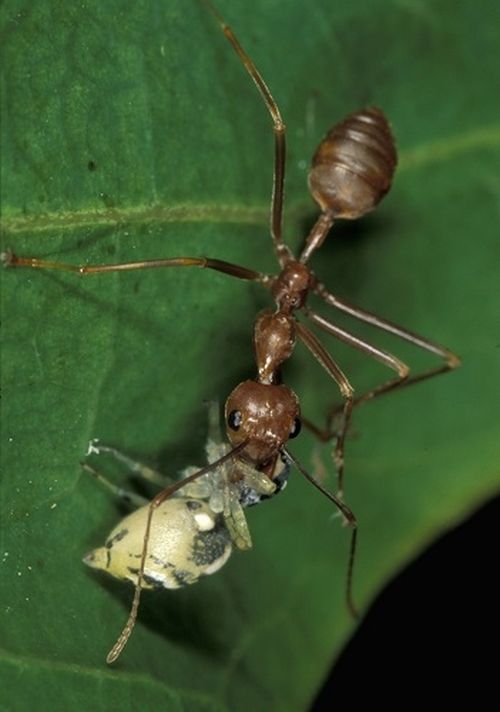Animals use different defense techniques, such as camouflage, mimicry or unusual associations or group living to defend themselves from its predator. The jumping spider who seeks the help of ants in order to protect themselves from its enemy, the spitting spiders, exhibits defense mechanism, which is completely weird and of course different. Interestingly, the ants, which act as a protector for the jumping spiders against the spitting spider, equally love to feed on them.
According to a latest research, the jumping spiders (Phintella piatensis) employ the scents released by the weaver ants (Oecophylla smaragdina) as a weapon in a battle against the spitting spider (Scytodes sp). But the twist in the tale is that the ants would not mind eating, jumping spiders, just as spitting spiders.
Such phenomenon in which an unguarded susceptible animal seeks protection using a predatory animal that acts as a protector and deter the attacks by other predators, are not being observed for the first time. Such associations were more commonly observed among birds than arachnids.
In the Philippines, spitting spiders likes to reside near the jumping spiders, on the large and waxy leaves and often make nests positioned right above the nest of the poor jumping spider. Therefore, spitting spiders can easily spit on its prey from a distance and rendering them immobilized before feeding on them. However, researcher Ximena Nelson of the University of Canterbury in New Zealand and Robert Jackson of the University of Canterbury discovered that spitting spiders refrain from approaching a jumping spider that build their nest close enough to the weaver ant’s nest.
The special olfactory compound, released by these weaver ants, ward off the spitting spiders. And knowing the fact that the weaver ants are dangerous too, jumping spiders still chooses a nest building site in the vicinity of a weaver ant nest. But don’t be in a hurry to conclude that a jumping spider is a fool.
To protect themselves from being served to the weaver ants, jumping spiders creates a strangely dense and strong web that the ants find difficult to tear apart. They also create swinging flaps of silk that act as a swinging door and help the jumping spider to escape using these doors when ambushed by ants.
Such one sided association in which there is no benefit for the ants may be more prevailing than what we know. Researchers therefore, need to find another relationship between an ant or other arthropod for better comprehension of such complexities of choosing such a habitat and its ecological consequences.




